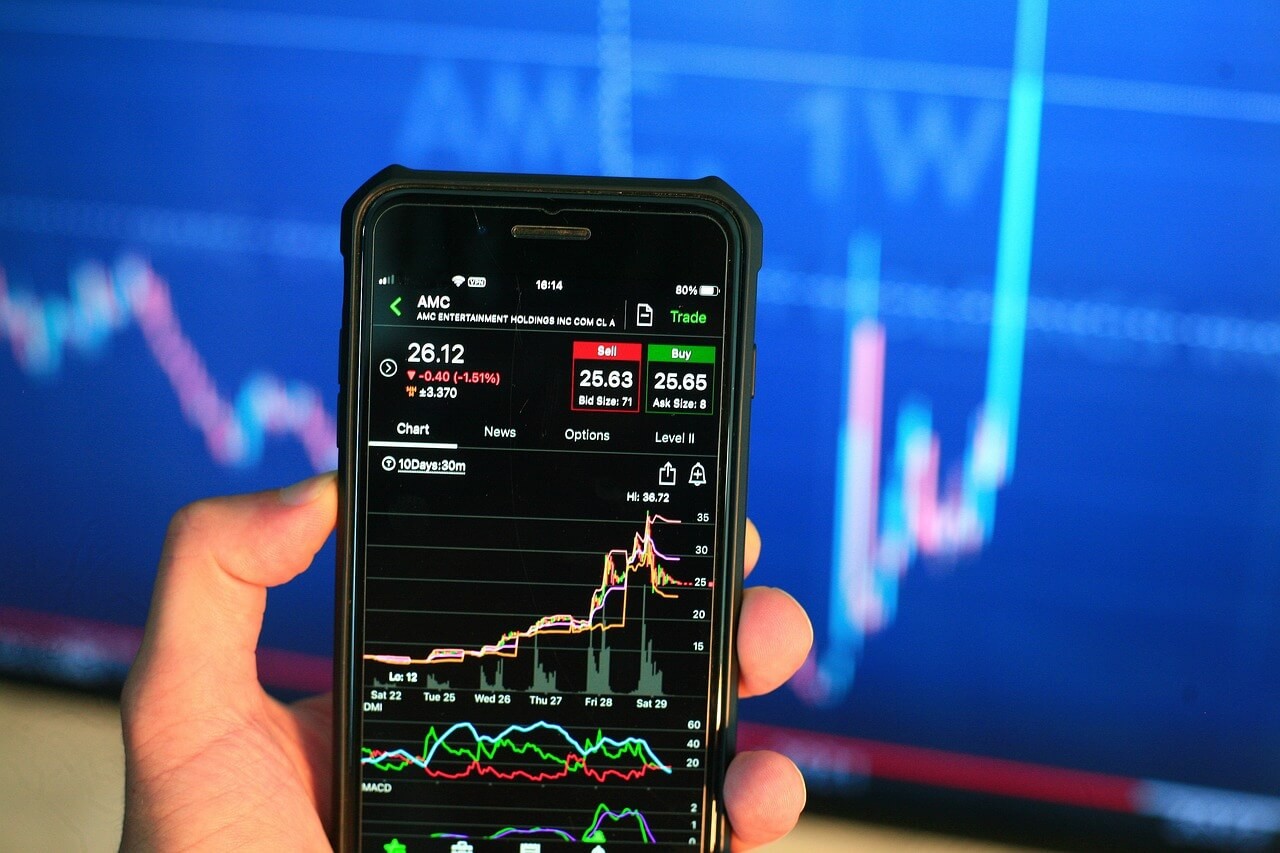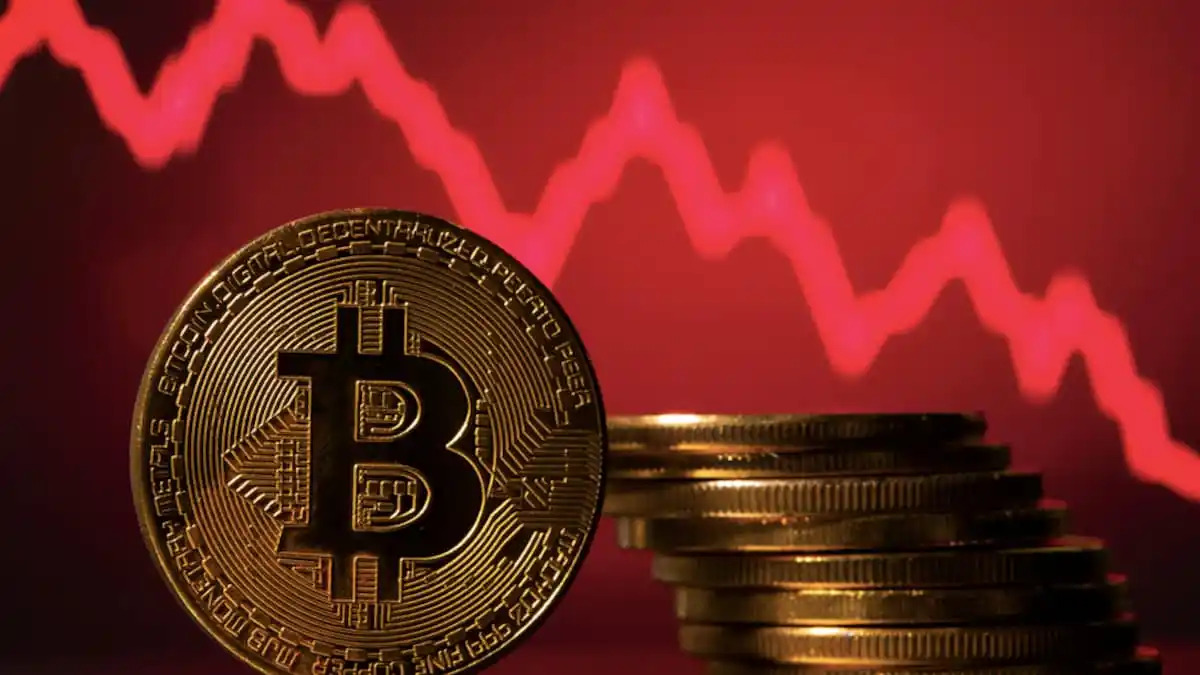Introduction
Insider trading is a term that often sparks curiosity and controversy. It refers to the buying or selling of company stocks, bonds, or other securities by individuals who have access to non-public information about the company. This privileged information can include financial data, upcoming mergers or acquisitions, regulatory decisions, or any other material that could impact the stock price once disclosed to the public.
Insider trading has existed for centuries, with instances dating back to the early stock markets in the 17th century. However, it wasn’t until the late 20th century that the regulation and prohibition of insider trading became a prominent focus for governments and regulatory bodies across the globe.
Throughout history, insider trading has raised ethical concerns due to the potential for unfair advantages and market manipulation. Investors relying on public information operate at an informational disadvantage when compared to those who possess non-public information. This inequality undermines the integrity and fairness of the financial markets, which rely on the principle of equal access to information.
In response to these concerns, authorities around the world began to enact legislation to combat insider trading and protect investors. This article will delve into the historical development of insider trading regulation, focusing specifically on the United States. It will explore key milestones, notable cases, and the impact of regulations implemented to safeguard the fairness and transparency of financial markets.
By understanding the evolution and significance of insider trading regulations, both investors and the general public can better comprehend the importance of ensuring a level playing field and maintaining market integrity.
Overview of Insider Trading
Insider trading, as the name suggests, involves the buying or selling of securities based on confidential or non-public information. Individuals who engage in insider trading use their privileged position to gain an unfair advantage over other investors in the market. This practice can distort market prices and compromise the integrity of financial markets.
Insiders who typically engage in this activity include corporate executives, board members, major shareholders, and employees with access to confidential information about a company. They possess insights that regular investors do not have, which can significantly impact a company’s stock price.
There are two types of insider trading: legal and illegal. Legal insider trading refers to transactions made by insiders that comply with regulatory requirements and are publicly disclosed. For example, executives purchasing company stock on the open market, based on their belief in the company’s future prospects, would qualify as legal insider trading.
On the other hand, illegal insider trading occurs when insiders trade securities based on non-public information, giving them an unfair advantage over other market participants. This includes trading on material information that would influence an investor’s decision to buy or sell securities. Illegal insider trading is subject to prosecution and severe penalties.
Insider trading not only affects individual investors but also erodes market confidence and hampers fair market dynamics. It undermines the trust between market participants and leads to a lack of faith in the fairness of the financial system.
To combat insider trading, regulatory bodies have enacted laws and regulations that prohibit the use of non-public information for personal gain. These regulations aim to ensure a fair and level playing field for all investors and maintain the integrity of the financial markets.
While insider trading remains a challenging issue to combat completely, regulatory authorities continue to focus on improving detection methods, enforcing strict penalties for violators, and educating market participants about the consequences of engaging in illegal insider trading.
The following sections will explore the historical development of insider trading regulations, with a particular emphasis on its evolution in the United States.
Early History of Insider Trading
The origins of insider trading can be traced back to the very beginnings of stock markets. In fact, instances of insider trading have been documented for centuries, long before formal regulations were put in place.
One of the earliest recorded cases of insider trading dates back to the Dutch East India Company in the 17th century. Shareholders in the company would gather at local coffeehouses to exchange information and trade shares. However, some individuals began exploiting their knowledge to make profits. This led to the establishment of rules by the Dutch authorities, making it illegal to trade securities based on non-public information.
In the United States, insider trading had its roots in the development of the stock market during the late 18th and early 19th centuries. As the financial markets grew, so did the instances of insider trading.
During this era, insider trading was seen as a commonplace practice, with little to no regulation or enforcement. Insiders, such as company owners and directors, freely traded securities using non-public information. Speculators and investors who were not privy to this information were at a significant disadvantage.
However, as stock markets continued to mature and gain prominence, concerns about the fairness of trading practices arose. The impact of insider trading on market integrity and the interests of ordinary investors could not be ignored.
Efforts to address these concerns began in the early 20th century. The Securities and Exchange Commission (SEC) was established in the United States in 1934 and was given the mandate to regulate the securities industry and protect investors. The SEC played a pivotal role in shaping the regulations surrounding insider trading and enforcing compliance.
The early regulations on insider trading aimed to establish rules and guidelines for fair market practices. However, it was still a challenging task to detect and prosecute insider trading cases due to limited resources, technological advancements, and the complex nature of the financial markets.
It wasn’t until several notable insider trading scandals captured public attention that significant amendments were made to existing laws. These scandals highlighted the need for stricter regulations to prevent abuses of corporate power and protect investors’ interests.
The next section will delve into when insider trading officially became illegal and the historical events surrounding this crucial development.
Insider Trading Becomes Illegal: A Historical Perspective
The prohibition of insider trading did not happen overnight; it was a gradual process influenced by several key historical events. The recognition of the detrimental effects of insider trading on market integrity and investor confidence led to the implementation of laws and regulations to curb this practice.
One crucial milestone in the history of insider trading regulation was the passing of the Securities Exchange Act of 1934 in the United States. This act gave the Securities and Exchange Commission (SEC) the authority to regulate the securities industry and protect investors. While the act did not explicitly mention insider trading, it laid the groundwork for future regulations.
A significant turning point came in the 1960s with the rise of academic research and public awareness surrounding insider trading. Scholars began examining the impact of insider trading on market efficiency and identified the need for regulations to maintain a level playing field.
It wasn’t until the 1980s that insider trading regulations gained substantial momentum. The catalyst for this push was a series of high-profile insider trading scandals that sent shockwaves through the financial markets.
One such scandal was the Ivan Boesky case in 1986. Boesky, a prominent investor, was convicted of insider trading and implicated several others, including corporate raider Michael Milken. The investigations and prosecutions that unfolded exposed the extent of illegal insider trading and prompted Congress to take action.
In response to these scandals, the U.S. Congress passed the Insider Trading Sanctions Act in 1984, which enhanced penalties for insider trading violations. This act was followed by the Insider Trading and Securities Fraud Enforcement Act in 1988, which clarified the definition of insider trading and expanded the SEC’s enforcement powers.
Another significant development took place in 2000 with the passing of the Securities and Exchange Commission’s Regulation Fair Disclosure (Reg FD). This regulation aimed to promote fair and equal access to material information by prohibiting selective disclosure of important company information to specific individuals or groups.
The events over the years, coupled with growing public outrage and pressure for stricter regulations, led to the gradual tightening of insider trading laws. Today, insider trading is considered a serious offense, and offenders can face severe civil and criminal penalties.
While regulations have become more stringent, insider trading remains a challenge due to evolving tactics and the advanced technological landscape. Authorities now employ sophisticated surveillance methods, analyze patterns, and monitor unusual trading activity to detect and prosecute insider trading cases.
The next section will provide an in-depth look at the insider trading regulations and enforcement in the United States.
Insider Trading Regulations in the United States
The United States has implemented a comprehensive framework of regulations to combat insider trading and safeguard the integrity of its financial markets. These regulations primarily revolve around two key legislations: the Securities Exchange Act of 1934 and the Insider Trading and Securities Fraud Enforcement Act of 1988.
The Securities Exchange Act of 1934 established the Securities and Exchange Commission (SEC) and granted it regulatory authority over the securities industry. While this act did not explicitly address insider trading, subsequent rulings by the SEC and court decisions laid the foundation for the prohibition of insider trading.
The Insider Trading and Securities Fraud Enforcement Act of 1988 was a significant milestone in the United States’ efforts to curtail insider trading. This act clarified the definition of insider trading and expanded the SEC’s enforcement powers.
Under current regulations, insider trading is prohibited under Section 10(b) of the Securities Exchange Act of 1934 and Rule 10b-5 promulgated by the SEC. These regulations make it unlawful for any person to engage in fraud or deceit in connection with the purchase or sale of securities.
Insider trading is further restricted by Rule 10b5-1, which establishes a framework for individuals to trade securities while complying with the law. This rule allows insiders to create a pre-arranged plan, known as a Rule 10b5-1 plan, where they can trade securities at a future date, preventing any potential conflicts of interest or misuse of non-public information.
The penalties for insider trading violations can be severe. Criminal charges can lead to imprisonment for up to 20 years and fines in the millions of dollars. Civil penalties can include disgorgement of illegal profits, monetary fines, and bans from participating in the securities industry.
Furthermore, the United States has implemented additional measures to enhance transparency and prevent selective disclosure of material non-public information. The Securities and Exchange Commission’s Regulation Fair Disclosure (Reg FD), enacted in 2000, ensures that companies disclose material information to the public in a fair and simultaneous manner, eliminating preferential treatment of specific individuals or groups.
To ensure compliance and enforce insider trading regulations, the SEC actively investigates suspicious trading activity, conducts surveillance, and collaborates with law enforcement agencies. The Financial Industry Regulatory Authority (FINRA) also plays an important role in regulating the securities industry and monitoring trading practices to detect and prevent insider trading violations.
Continued efforts are being made to stay ahead of evolving tactics used in insider trading, including the use of technology for surveillance and detection. The SEC and other regulatory bodies are constantly adapting their enforcement strategies to mitigate risks and maintain market integrity.
The next section will explore some landmark insider trading cases in the United States, shedding light on the impact of these regulations and enforcement efforts.
Case Studies: Landmark Insider Trading Cases
Landmark insider trading cases have played a pivotal role in shaping the enforcement of insider trading regulations and highlighting the consequences of engaging in this illegal activity. These cases serve as important examples of the impact of insider trading on market integrity and the severity of the penalties imposed on violators.
One of the most well-known cases is the Martha Stewart case in 2004. Stewart, a prominent businesswoman and television personality, was convicted of insider trading related to her sale of ImClone Systems shares. She sold her shares based on non-public information about an impending negative announcement regarding the company’s flagship drug. Stewart served a prison sentence and faced significant reputational damage as a result of this case.
Another landmark case is the Raj Rajaratnam case in 2011. Rajaratnam, a billionaire hedge fund manager, was convicted of multiple counts of securities fraud and insider trading. The case involved the use of illegal tips to make substantial profits in various stocks. Rajaratnam received one of the longest prison sentences for insider trading, highlighting the severity of the penalties imposed for such offenses.
The case of SAC Capital Advisors, led by Steven A. Cohen, brought insider trading to the forefront of public attention. Several employees of the hedge fund were implicated in insider trading activities, leading to the firm paying a record-breaking settlement of over $1.8 billion. This case demonstrated the importance of holding not only individuals but also organizations accountable for insider trading violations.
The notorious case involving Galleon Group in 2009 revealed a widespread network of insider trading. Raj Rajaratnam, the founder of Galleon Group, and several high-profile individuals were prosecuted for trading on non-public information. The investigation, which involved extensive wiretaps, shed light on the magnitude and sophistication of insider trading schemes.
These landmark cases, among others, have sent a strong message that insider trading will not be tolerated and that those who engage in such activities will face severe repercussions. They have set important precedents and reinforced the significance of maintaining fair and transparent financial markets.
It is crucial to note that these cases represent only a fraction of the instances of insider trading, as many cases go undetected or unprosecuted. Efforts to enhance surveillance, detection, and enforcement mechanisms remain ongoing to effectively combat this illicit practice.
The impact of these cases and the enforcement of insider trading regulations cannot be underestimated. They have contributed to a heightened awareness of the consequences of engaging in insider trading and have played a vital role in deterring potential violators.
The subsequent section will delve into the broader impact and implications of insider trading laws on financial markets and investors.
Impact of Insider Trading Laws
The implementation of insider trading laws has had a profound impact on financial markets, investors, and the overall integrity of the securities industry. These laws serve to promote transparency, fairness, and investor confidence, while deterring individuals from engaging in illegal insider trading activities.
One of the key impacts of insider trading laws is the creation of a level playing field for all market participants. By prohibiting the use of non-public information for personal gain, these laws ensure that all investors have equal access to material information. This helps to maintain market integrity and prevents unfair advantages for insiders, ultimately fostering trust and confidence in the financial markets.
Insider trading laws also play a vital role in protecting the interests of individual investors. By deterring insider trading, these laws reduce the likelihood of market manipulation and price distortions. This fosters a more stable and predictable investment environment, allowing investors to make informed decisions based on publicly available information.
Additionally, the enforcement of insider trading laws acts as a deterrent for potential violators. The severe penalties and reputational damage associated with insider trading convictions serve as a powerful warning, dissuading individuals from engaging in illegal activities. This deterrent effect helps to maintain market integrity and contributes to the overall fairness of the securities industry.
Insider trading laws also contribute to the broader goal of market efficiency. By reducing the information asymmetry between insiders and the general public, these laws ensure that securities prices reflect all publicly available information. This facilitates efficient capital allocation and enhances the overall functioning of financial markets.
Moreover, the enforcement of insider trading laws sends a signal that regulators and authorities are actively working to preserve market integrity. This sends a message to investors that their interests are being protected and that fraudulent activities will not go unpunished. This fosters confidence in the financial system and encourages greater participation in the markets.
It is important to acknowledge that the impact of insider trading laws is not without challenges. The ever-evolving nature of financial markets and rapid advancements in technology present ongoing obstacles in detecting and prosecuting insider trading cases. Regulatory bodies must continuously adapt their enforcement strategies to keep pace with new tactics used by potential violators.
Despite these challenges, insider trading laws have undeniably had a substantial impact on the fairness, transparency, and overall integrity of financial markets. They serve as a critical deterrent, protect the interests of investors, and contribute to the efficient functioning of the securities industry.
The following section will discuss recent developments in insider trading regulations, highlighting the ongoing efforts to strengthen existing laws and address emerging challenges.
Recent Developments in Insider Trading Regulations
Insider trading regulations continue to evolve and adapt to address emerging challenges in the financial markets. Regulatory bodies and lawmakers globally are constantly working to strengthen existing laws and keep pace with technological advancements and sophisticated trading practices.
One significant recent development is the increased focus on data analytics and surveillance technology to detect insider trading. Regulatory authorities are harnessing the power of big data and advanced analytics to identify patterns, detect abnormal trading activity, and improve the efficiency of investigations. This technology-driven approach enhances the ability to uncover potential insider trading violations and improves the overall effectiveness of enforcement efforts.
Another noteworthy development is the global cooperation among regulatory bodies to combat cross-border insider trading. Insider trading often involves trading activities that span multiple jurisdictions, making investigations and prosecutions complex. International collaboration and exchange of information have become essential in addressing these challenges and ensuring consistent enforcement of insider trading regulations.
In recent years, there has been an increased focus on the liability of corporate entities for insider trading committed by their employees or agents. Regulatory bodies are holding companies accountable for maintaining effective compliance programs and ensuring that employees understand and adhere to insider trading regulations. This approach aims to create a culture of compliance within organizations and increase overall market integrity.
Furthermore, the rise of cryptocurrencies and digital assets has posed new challenges for insider trading regulations. Regulators are grappling with how to address insider trading in these emerging markets where traditional regulations may not suffice. Efforts are underway to adapt existing laws or develop new frameworks to regulate insider trading in this evolving landscape.
Regulators are also increasingly recognizing the importance of whistleblower protections in detecting and combating insider trading. Whistleblower programs incentivize individuals with knowledge of insider trading violations to come forward and provide information to authorities. The establishment of robust whistleblower mechanisms promotes a culture of reporting, enhances enforcement capabilities, and acts as an additional layer of protection against insider trading activities.
Moreover, regulators are continually seeking feedback from market participants and industry experts to ensure that insider trading regulations remain relevant and effective. Public consultations, discussions, and reviews of existing laws play a crucial role in shaping future regulatory initiatives and addressing emerging concerns in the financial markets.
It is important to note that the nature of insider trading is constantly evolving, and regulators must remain vigilant in adapting regulations to address new practices and tactics used by potential violators. Ongoing efforts to enhance surveillance technology, strengthen cooperation among regulatory bodies, and adapt to emerging market trends will contribute to the effectiveness of insider trading regulations.
The next section will provide a concluding analysis of the historical and ongoing impact of insider trading regulations on financial markets and investor confidence.
Conclusion
Insider trading regulations have come a long way since their early inception, evolving and adapting to address the challenges posed by this illicit practice. From the historical development of laws to the landmark cases and recent regulatory developments, the impact of insider trading regulations on financial markets and investor confidence cannot be understated.
These regulations have been instrumental in creating a level playing field for all market participants, ensuring that no individuals have unfair advantages based on non-public information. By promoting transparency, fairness, and market integrity, insider trading laws have protected the interests of individual investors and fostered confidence in the financial system.
Through landmark cases and severe penalties, regulators have sent a strong message that insider trading will not be tolerated. The enforcement of these laws acts as a deterrent, dissuading individuals from engaging in illegal activities and preserving market integrity.
Recent developments in surveillance technology, international cooperation, whistleblower protections, and adapting to new market trends have further strengthened insider trading regulations. These ongoing efforts demonstrate the commitment of regulatory bodies to stay ahead of emerging challenges and maintain the effectiveness of these regulations.
However, challenges remain. The ever-evolving nature of financial markets and the emergence of new technologies continuously test the efficacy of insider trading regulations. It is therefore crucial for regulators to remain adaptive and proactive in their approaches to combat evolving tactics used by potential violators.
Ultimately, the enforcement of insider trading regulations is a shared responsibility. Market participants, regulatory bodies, and the public must remain vigilant and report suspicious activities to maintain the fairness and transparency of financial markets.
Insider trading regulations will continue to serve as a vital framework for ensuring equal access to information, protecting investor interests, and preserving the overall integrity of the securities industry. Through continuous collaboration, innovation, and enforcement, these regulations will play a crucial role in shaping the future of financial markets.

























